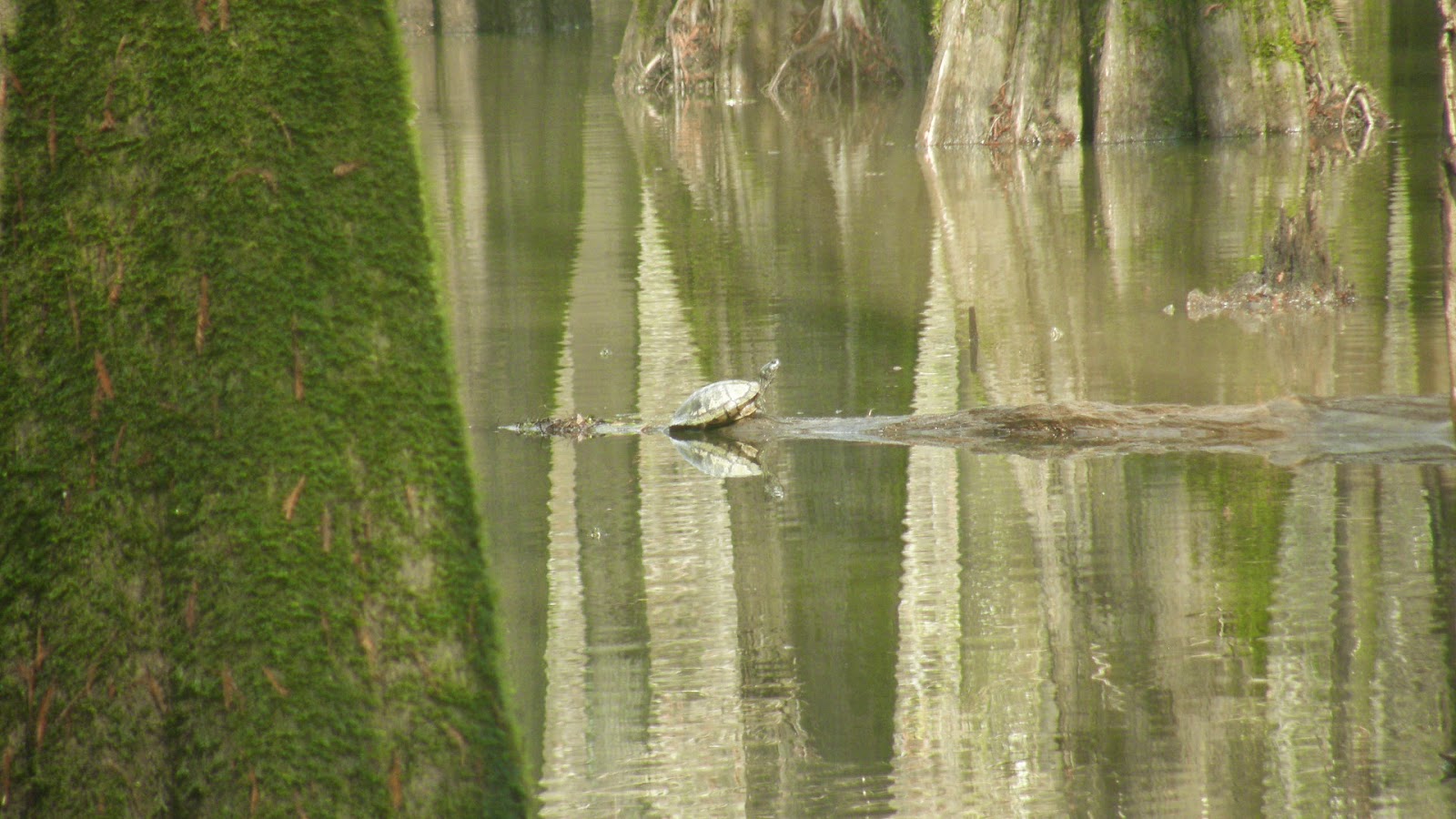IBWOH's: Brian Carlisle, Chris Carlisle.
Summary: Eager to get back out into the field during this important part of the Ivorybill search season, Brian and I decided to take a trip down to Bogue Chitto NWR. Bogue Chitto encompasses the north end of the important Pearl River complex; its massive southern tier is where Mike Collins has searched for the Ivorybill for many years. (Read his reports at www.fishcrow.com.)
After several days of cold and rain, the clouds finally moved out of southwest Mississippi not long after dawn, though the cold remained, with temperatures for most of our trip remaining in the upper 30's (Fahrenheit). We drove down past Picayune, MS, to the southernmost finger of the NWR, and hiked a trail around a small lake. Driving back north from there, we wandered the backroads between Interstate 59 and the NWR, looking for interesting habitat and points of entry therein. We found some of the former, and (as usual) far less of the latter, finally putting boots to the ground in a swamp between a youngish pine forest and some well-to-do farms.
We discovered a dead gum tree with some intriguing woodpecker work. It was the only such tree we found there.
I believe the peeling and excavation to be the work of a Pileated Woodpecker, though it is some of the most impressive I have seen from that species to date.
Conclusions: Nothing too compelling, IBWO-wise. Some truly beautiful country, though, and my curiosity is now at least temporarily satisfied regarding an area that I'd long had in my sights. At some point I would like to return, and explore the NWR on the west bank of the Pearl, in Louisiana, which is much more extensive than that on the Mississippi side.
Of note: my wife recently procured for me a used copy of Hoose's excellent history, The Race to Save the Lord God Bird, which I had been needing to add to my library, mainly for its information on the recent history of the search for the Cuban Ivorybill. Also, I ordered my kayak yesterday! Delivery is expected in one week. I am excited and very nervous, and will have to take the kayak to a safe place for some trial runs first, since I have no experience with such craft. But with the kayak, the water barrier of Black Creek can be crossed, and vast Big Swamp -- in the heart of the Pascagoula River Swamp, the most promising Ivorybill habitat I have personally found -- will lie open to us for exploration.
Summary: Eager to get back out into the field during this important part of the Ivorybill search season, Brian and I decided to take a trip down to Bogue Chitto NWR. Bogue Chitto encompasses the north end of the important Pearl River complex; its massive southern tier is where Mike Collins has searched for the Ivorybill for many years. (Read his reports at www.fishcrow.com.)
After several days of cold and rain, the clouds finally moved out of southwest Mississippi not long after dawn, though the cold remained, with temperatures for most of our trip remaining in the upper 30's (Fahrenheit). We drove down past Picayune, MS, to the southernmost finger of the NWR, and hiked a trail around a small lake. Driving back north from there, we wandered the backroads between Interstate 59 and the NWR, looking for interesting habitat and points of entry therein. We found some of the former, and (as usual) far less of the latter, finally putting boots to the ground in a swamp between a youngish pine forest and some well-to-do farms.
An anhinga swims past a great blue heron.
Canada geese in a farm pond.
Much of the swamp floor was dry. Unlike other swamps in this region that I have explored, there is a sandy, gravelly bottom here.
Water lines on the trees indicate that the water can get quite high. The forest here is almost exclusively black gum, with some baldcypress, and is entirely second or (more likely) third growth.
We discovered a dead gum tree with some intriguing woodpecker work. It was the only such tree we found there.
At first, I thought it might be beaver work that was done during high water. I quickly decided that that was not the case.
Note the small size of the bark and wood chips at the base of the tree.
The scaling and excavation is dramatic in both this and the following views.
Though the tree was obviously dead, the bark was still fairly tight.
I believe the peeling and excavation to be the work of a Pileated Woodpecker, though it is some of the most impressive I have seen from that species to date.
Conclusions: Nothing too compelling, IBWO-wise. Some truly beautiful country, though, and my curiosity is now at least temporarily satisfied regarding an area that I'd long had in my sights. At some point I would like to return, and explore the NWR on the west bank of the Pearl, in Louisiana, which is much more extensive than that on the Mississippi side.
Of note: my wife recently procured for me a used copy of Hoose's excellent history, The Race to Save the Lord God Bird, which I had been needing to add to my library, mainly for its information on the recent history of the search for the Cuban Ivorybill. Also, I ordered my kayak yesterday! Delivery is expected in one week. I am excited and very nervous, and will have to take the kayak to a safe place for some trial runs first, since I have no experience with such craft. But with the kayak, the water barrier of Black Creek can be crossed, and vast Big Swamp -- in the heart of the Pascagoula River Swamp, the most promising Ivorybill habitat I have personally found -- will lie open to us for exploration.


























































.jpg)









